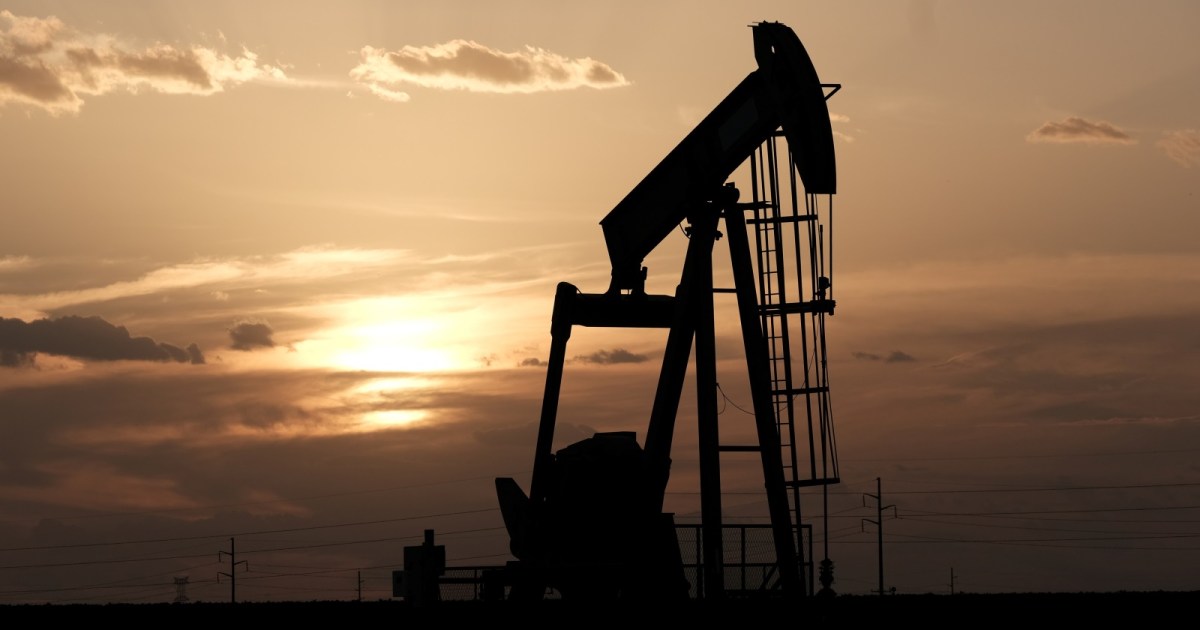Unpaid debt gaps, slow demand for oil and bankruptcy looming, this is the view in US shale oil now, yet most expectations remain optimistic, according to an article in Oil Price.
Analysts expect production to actually recover to levels before the Corona pandemic at some point in the next five years, but is that true? The essayist, Irina Slave, wonders.
Since last March, total US oil production has fallen by as much as 2.6 million barrels per day, due to the double blow from the oil price war and the Corona epidemic that shattered demand.
Little chance
Most forecasters - including Morgan Stanley, Rystad Energy, and Wood Mackenzie - and others believe that there is little chance that US oil production will return to growth this year or next, but then there will be A recovery, by 2023, American producers will produce more than 12 million barrels per day of crude again if these expectations are true.
But there is no agreement among all experts. This expert, Arthur Berman, believes that the American energy hegemony agenda has ended, and oil production is expected to decrease by up to 50% over the next 12 months, not because of the drop in oil prices but because of the number of discontinued drilling rigs , The number of rigs in the United States has fallen 69% this year from 539 in mid-March to 165 last week.
Oil production will drop 50% by this time next year, and as a result, US oil production will drop to less than 8 million barrels per day by mid-2021.
The need for money
"What if the number of platforms increases from time to time? There will be no difference because of the time difference between contracting the first drilling rig and production," Berman says - according to the article. The new oil is at a profit margin, but for the time being they don't have either.
In her article, the author adds that, according to a recent report by Deloitte, US shale oil producers have spent a total of $ 300 billion in cash without making a profit.
Moreover, the industry has also cut up to $ 450 billion in invested capital in the past 15 years, and the only thing this industry has to show is very record production, which made the United States the world's largest oil producer and helped introduce the world In the oversupply that is now hitting American oil producers severely.
Banks are not enthusiastic
At the same time, banks have become unenthusiastic about the industry that they have happily funded for more than a decade, and one of the reasons is the collapse of oil prices, the other reason is the fact that oil well production has not lived up to expectations, and the third reason is to spend money.
As a result, banks have reduced credit ceilings, with Moody's and JPMorgan estimating an average 30% reduction in asset-backed loans to the industry, which translates into billions of dollars, and outstanding debt becomes due Repayment, with billions more paid over the next five years.
And capital is still flowing into the American oil industry, despite its low levels even before the collapse of oil prices and the Corona epidemic.
Energy research and consulting firm Wood McKinsey says companies use this flow to reduce their debt burdens and extend bond maturity rather than increase production.
Facing the crisis
Will this be enough to confront the US shale oil for the crisis and help it survive? Maybe shale oil with some help, says the author.
According to the article in Oil Price, if the recent crisis - when Saudi Arabia tried to stifle shale oil by overproduction - had led to many bankruptcies, this also led to producers reducing their production costs while continuing to pump.
A steady growth path in oil demand helped them in that period. Now, shale oil producers will need a supply deficit coinciding with cautious optimism that demand can recover to pre-crisis levels.
The article says the first question about the future of shale oil in the United States is whether the market will turn into a deficit at the fair before the money dries up completely.
According to oil analysts at "JP Morgan" - the author adds - that by 2022 the price of Brent crude will rise to $ 60, which stimulates shale oil producers to work again, and the supply deficit may widen by 2025, amid possibilities that Brent will reach 100 Dollars, which actually leads to another golden age of shale oil.
Competitors
But given that America’s biggest shale competitors in the Middle East and Russia are well aware of what shale producers need to get on their feet, things may develop differently, and deficits may come later than hoped, and may be smaller.
The article quotes Ryan Lance, Chairman of the Board of Directors of "ConocoPhillips" that "the shale has not been broken, the shale has not left, and it will return again."
Lance adds that oil shale will return slower because there will be pressure on companies to restrict their capital programs, and may not grow as much as before.

